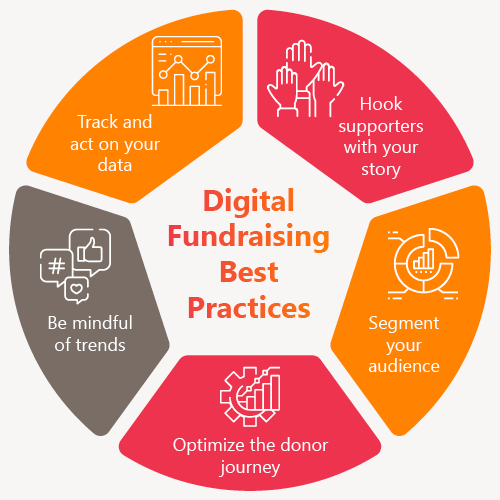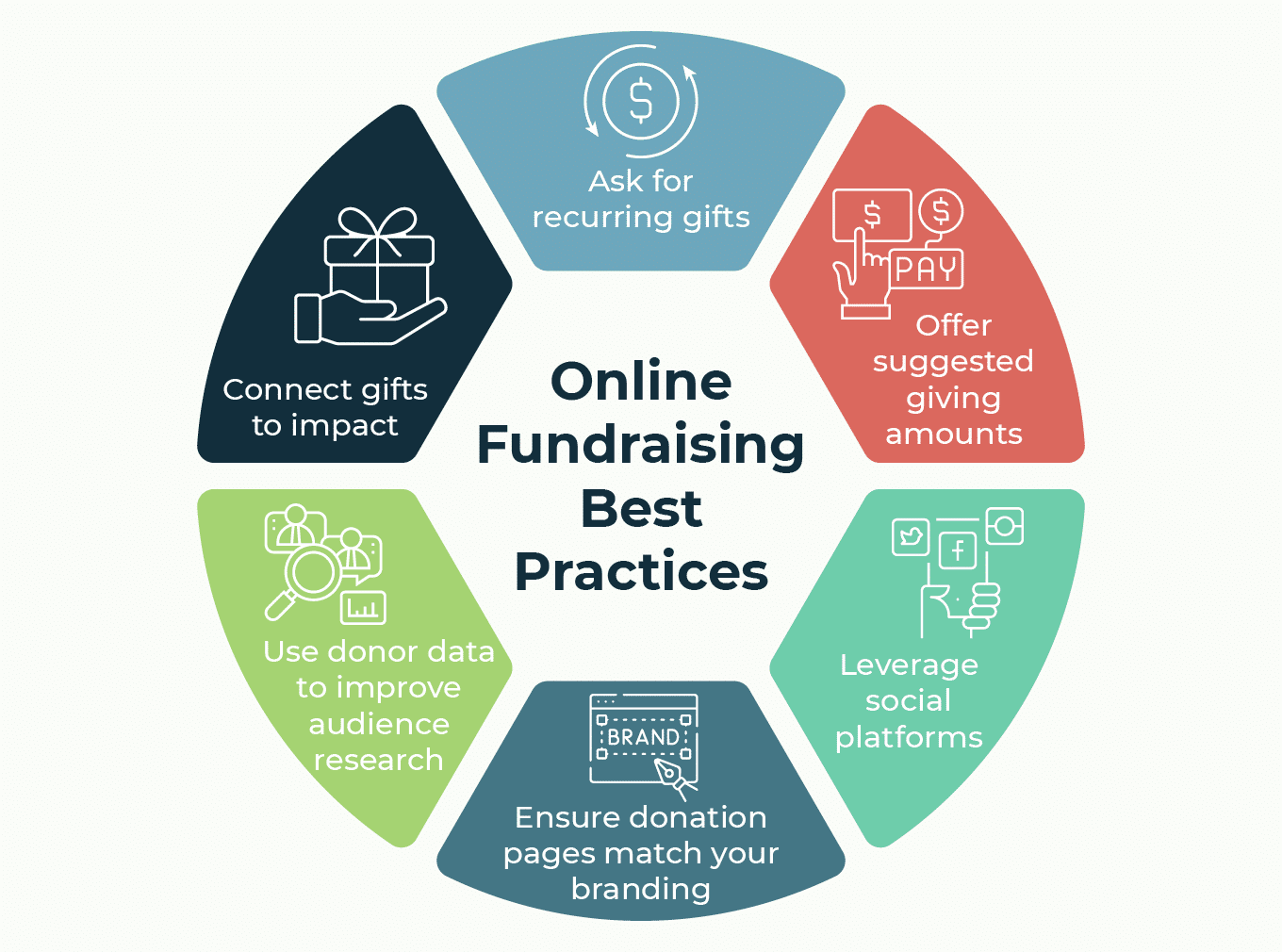Nonprofit Agency: Expert Services to Assistance Your Goal and Goals
The Duty of Neighborhood Interaction in Nonprofit Fundraising: Building Lasting Relationships for Sustainable Support
Community interaction is progressively acknowledged as a vital component of successful nonprofit fundraising. By cultivating authentic connections with local stakeholders, organizations can grow depend on and commitment, which are essential for lasting assistance. Nonetheless, the methods and methods utilized to involve neighborhoods differ widely, increasing important concerns concerning effectiveness and influence. What are the most effective methods for growing these important links, and just how can nonprofits measure their success in this field? Recognizing these dynamics might dramatically influence the future of fundraising efforts and the total mission of nonprofit organizations.
Recognizing Community Involvement
Area engagement is an essential element of successful nonprofit fundraising initiatives. Nonprofits need to determine essential stakeholders-- such as neighborhood participants, local businesses, and other companies-- to create reliable engagement techniques.
Effective neighborhood interaction is asserted on active listening and responsiveness to the needs and passions of the community. This procedure involves obtaining feedback, recognizing community characteristics, and making sure that the company's objective straightens with local top priorities. Engaging the area can take various types, consisting of public meetings, volunteer possibilities, and partnership efforts, each made to encourage participation and financial investment in the company's objectives.
Furthermore, area engagement must be come close to as a continuous discussion instead of an one-time initiative. By cultivating an inclusive atmosphere where area voices are listened to and valued, nonprofits can build a solid structure for future fundraising endeavors. Ultimately, a deep understanding of neighborhood involvement empowers organizations to produce genuine links that enhance their overall efficiency and sustainability.
Advantages of Solid Relationships
Solid relationships formed with neighborhood involvement return numerous advantages for nonprofit fundraising efforts. Primarily, these relationships foster count on and reputation, important elements in motivating benefactors to add. When possible fans see a not-for-profit proactively entailed in their neighborhood, they are most likely to think in its goal and influence.

In addition, these partnerships promote effective interaction. Nonprofits can utilize their links to share stories of impact, updates, and needs, making sure that supporters continue to be informed and engaged. This open line of interaction not only enhances bonds but likewise motivates word-of-mouth promotion, increasing the nonprofit's reach.
Last but not least, solid community connections can bring in brand-new partners and sponsors. Organizations and individuals are much more likely to align with organizations that show purposeful neighborhood participation, providing extra resources and assistance that can considerably enhance fundraising abilities. Hence, cultivating robust connections via community interaction is important to a not-for-profit's long-term fundraising success.
Techniques for Efficient Interaction
How can nonprofits properly involve their communities to enhance fundraising efforts? Normal updates, involving material, and calls-to-action can galvanize community interest and engagement.
2nd, holding community occasions, such as workshops, volunteer chances, or fundraising drives, facilitates face-to-face communication, enabling nonprofits to showcase their impact and efforts. These events not only elevate funds however also grow relationships and permit neighborhood participants to engage directly with the reason.
Third, carrying out tailored interaction approaches can boost engagement. Customizing messages to specific donor sectors based on passions and past payments promotes a feeling of belonging and investment in the company's mission.
Last but not least, creating collaborations with local services and community leaders can magnify outreach efforts. Collective initiatives can boost visibility and credibility, showing a cumulative commitment to the neighborhood's well-being. By integrating these approaches, nonprofits can build enduring partnerships that enhance fundraising efforts and drive lasting assistance.
Measuring Interaction Success
While involving the community is important for effective not-for-profit fundraising, measuring the efficiency of these involvement initiatives is equally essential. Developing clear metrics permits companies to evaluate exactly how well they are getting in touch with their target market and achieving their fundraising goals. Key efficiency signs (KPIs) such as benefactor retention prices, volunteer engagement levels, and engagement on social networks systems provide concrete information for evaluation.

Frequently evaluating these metrics enables companies to pivot their techniques when necessary, making certain that neighborhood engagement stays aligned with their total objective. In addition, sharing these results with stakeholders fosters openness and builds trust fund, encouraging more neighborhood participation. Eventually, a durable measurement structure not only notifies future fundraising campaigns however also enhances the partnership between the not-for-profit and its advocates, laying the foundation for sustainable success.
Instance Studies in Neighborhood Impact
Many study illustrate the profound influence that community interaction can carry nonprofit fundraising success. One noteworthy instance is the "Food for Thought" campaign, where a regional food financial institution partnered with businesses and institutions to host area dinners. These events not just raised funds however additionally cultivated a sense of belonging among participants, substantially boosting benefactor retention rates.
An additional engaging situation is the "Environment-friendly Spaces Job," which involved regional residents in the revitalization of metropolitan parks. This initiative not just gathered economic support from local businesses however likewise cultivated a volunteer base that added to continuous maintenance and shows. The sense of ownership and satisfaction among area participants equated right into continual payments.
In the world of arts, published here the "Art for All" project efficiently involved regional artists and customers to produce collective art setups, causing enhanced exposure and donations for a local arts nonprofit.
These instances highlight that when nonprofits focus on neighborhood involvement, they can create pop over to this site long lasting connections that enhance fundraising initiatives, making certain lasting support and fostering a vivid area culture. Such cases show that area interaction is not simply a technique but a necessary pillar of nonprofit success.
Final Thought
In final thought, community involvement is essential to the success of not-for-profit fundraising efforts. Inevitably, a robust structure of community assistance not just enhances fundraising prospective yet also cultivates a society of cooperation, vital for attaining long-term organizational objectives and sustaining purposeful impact. fundraising consultant.
Nonprofits have to determine key their website stakeholders-- such as neighborhood participants, local services, and other companies-- to develop effective involvement techniques.

In conclusion, area interaction is essential to the success of not-for-profit fundraising efforts.